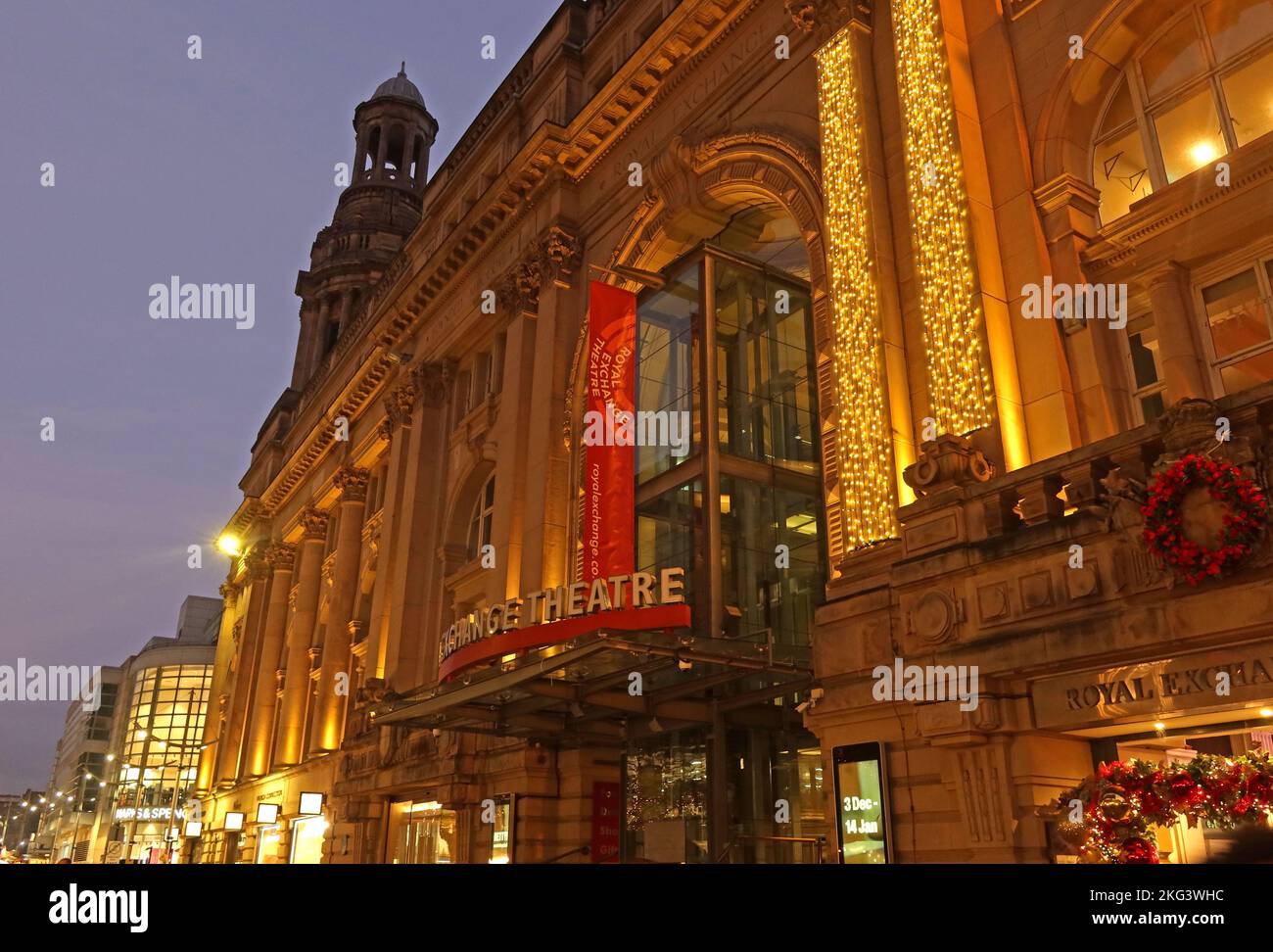Manchester Royal Exchange theatre, at night, St Anns Square, city centre Manchester, England, UK, M2 7DH

Image details
Contributor:
Tony Smith / Alamy Stock PhotoImage ID:
2KG3WHCFile size:
56.1 MB (2 MB Compressed download)Releases:
Model - no | Property - noDo I need a release?Dimensions:
5376 x 3648 px | 45.5 x 30.9 cm | 17.9 x 12.2 inches | 300dpiDate taken:
19 November 2022Location:
St Anns Square, city centre Manchester, England, UK, M2 7DHMore information:
Thomas Harrison designed the new exchange of 1809 at the junction of Market Street and Exchange Street. Harrison designed the exchange in the Classical style. It had two storeys above a basement and was constructed in Runcorn stone. The cost, £20, 000, was paid for in advance by 400 members who bought £50 shares and paid £30 each to buy the site. The semi-circular north façade had fluted Doric columns. The exchange room where business was conducted covered 812 square yards. The ground floor also contained the members' library with more than 15, 000 books. The basement housed a newsroom lit by a dome and plate-glass windows, its ceiling was supported by a circle of Ionic pillars spaced 15 feet from the walls. The first-floor dining-room was accessed by a geometrical staircase. The exchange opened to celebrate of the birthday of George III in 1809. It also contained other anterooms and offices. As the cotton trade continued to expand, larger premises were required and its extension was completed in 1849. The Exchange was run by a committee of notable Manchester industrialists. From 1855 to 1860 the committee was chaired by Edmund Buckley. The second exchange was replaced by a third designed by Mills & Murgatroyd, constructed between 1867 and 1874. It was extended and modified by Bradshaw Gass & Hope between 1914 and 1931 to form the largest trading hall in England. The trading hall had three domes and was double the size of the current hall. The colonnade parallel to Cross Street marked its centre. On trading days merchants and brokers struck deals which supported the jobs of tens of thousands of textile workers in Manchester and the surrounding towns. Manchester's cotton dealers and manufacturers trading from the Royal Exchange earned the city the name, Cottonopolis